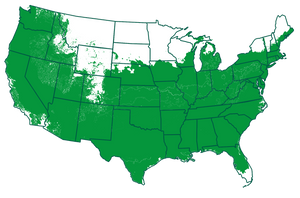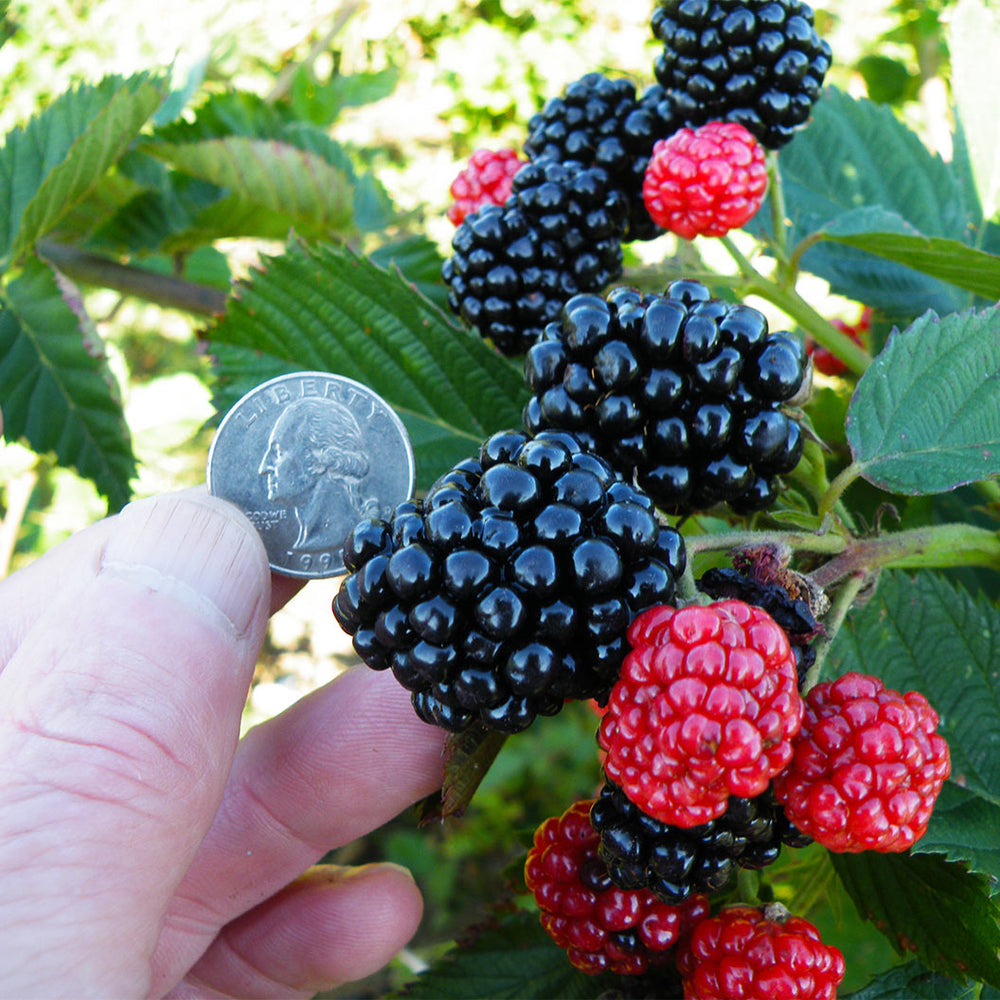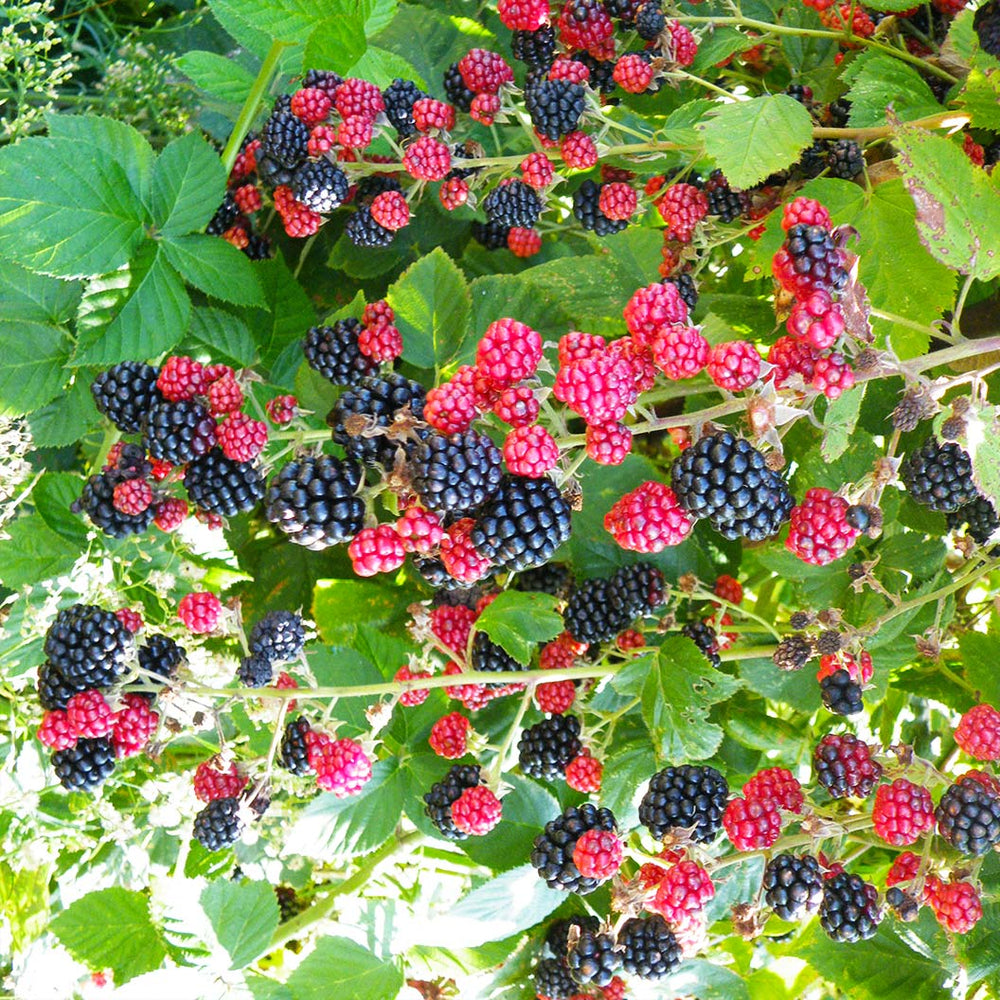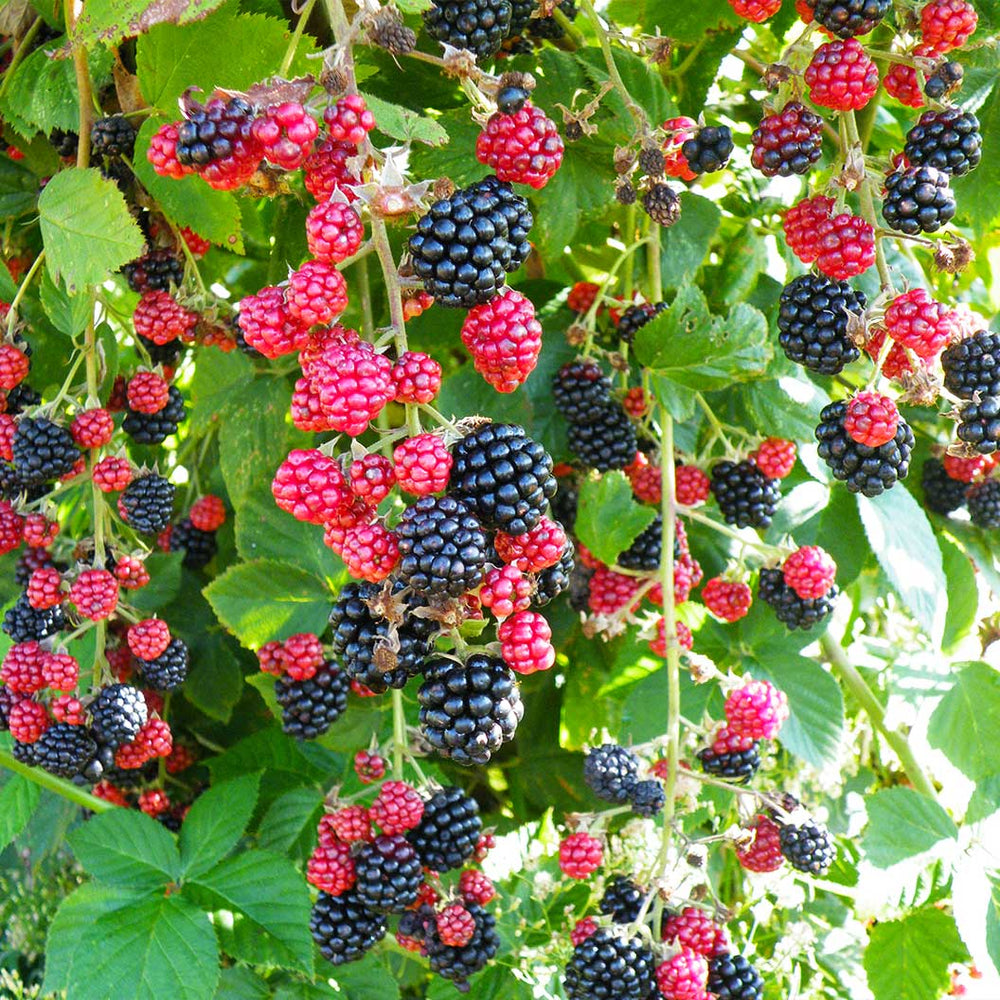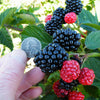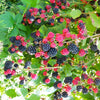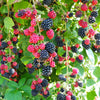* Images shown are of mature plants

Have questions? Talk with our Plant Experts (800) 973-8959
Save 25% on $200+ with code FALL25.
Questions? Call our plant experts: (800) 973-8959
Self-Pollinating, Sweet Blackberries on Thornless, Heat-Tolerant Bush
With the self-pollinating Chester Blackberry Bush, you get high fruit production from summer through fall without the need for other blackberry varieties. This hardy plant thrives in many environments, making it great for any fruit lover!
Enjoy sweet, large blackberries from the comfort of your backyard and create your favorite recipes from scratch, like pies, cobblers, jams, and more. These juicy berries are also great for fruit trays and salads, and they come on a convenient thornless bush.
Plus, this plant is tolerant of drought, cold, and heat while resistant to pests. They're easy to grow and ripen in July, so you can have a full season of fresh, firm fruit.
The Chester Blackberry Bush is also pollinator-friendly, with butterflies, bees, and birds loving the white and pink blooms on this plant. Buy yours today!
Pollination Info
Chester Blackberry Bush Pollination
Chester Blackberry Bushs are self-fertile. You will get fruit with only one plant. However, adding an additional Chester Blackberry Bush will drastically increase the size of your crop.
Planting & Care
Planting: We recommend spacing these plants 5 to 6 feet apart to allow ample room for growth. In rows, plant them 2 to 3 feet apart with rows spaced 3 to 5 feet apart in well-tilled, weed-free soil.
To plant, place in an area of full sunlight (6-8 hours daily) and dig a hole that is at least 6 inches wider and the same depth as the root mass. The crown or graft of the plant should be slightly above ground level, as it was positioned in our nursery. Trim off any broken roots and branches before planting.
Spread the roots in the hole and fill it halfway with soil. Then, water the area until the soil settles and becomes thoroughly saturated. Re-adjust the plant if necessary and fill the hole with the remaining soil. Finally, backfill with the rest of the soil and water well.
Watering: If summer brings one to one and a half inches of rainfall each week, you won’t need to use the hose. However, during dry spells, give your new plant a thorough soaking by letting your garden hose trickle slowly, which allows for better absorption. A soaker hose can also water multiple plants at once.
Keep newly planted crowns watered and ensure the soil remains moist throughout the growing season. To check if your plant needs water, touch the soil around the roots. If the soil is dry, soak it using the hose end without a nozzle, avoiding the leaves. For an accurate soil check, insert your finger about three inches deep.
Fertilizer: Chester Thornless Blackberries generally do not require heavy fertilization once they are established. For new plantings, apply a balanced fertilizer, such as 10-10-10, at a rate of about 5 pounds per 100 linear feet of row. For established plants, fertilize in early spring and again after the harvest. However, be careful not to over-fertilize, as this can lead to excessive vegetative growth at the expense of fruit production. Conducting a soil test can help you determine the specific nutrient needs of your plants.
Pruning: After planting, prune bare-root canes back to about 2 inches above the ground to encourage new growth. Once your raspberry plants have grown sufficiently (which may be after their first year), prune them in early spring as new growth appears.
For young canes, trim them to a height of 4 to 5 feet to prevent overgrowth and improve fruit quality. Remove all weak, dead, damaged, or diseased canes, and as your plants mature, leave only about 8 to 10 of the strongest canes.
Weed Control: The best method of removing weeds and suckers from around your blackberry bushes is to get a firm grasp on them and pull them upwards out of the ground in a twisting motion. Placing a 3 inch thick layer of mulch around your bushes to prevent weeds from growing. Mulch will also help the soil retain moisture.
Pests and Diseases: Some of the most common pests for blackberry shrubs include spider mites and birds. To rid of bugs like mites or worms, spray your bush with an all-natural organic pesticide. Birds can be trickier to get rid of. Place fake owls or snakes around the bushes to scare them, or cover your bushes with bird netting.
Common diseases for blackberries include different types of mold and fungi. These can be prevented by removing dead or damaged branches. Doing so will prevent chances for infections and the spread of pathogens. If you see any spotted leaves or branches, remove them. Molds and fungi can be treated with the use of organic fungicides.
Pollination: This variety is self-pollinating. While it's optional to plant pollinating partners for larger crops, doing so can enhance the yield. You'll still get fruit from just one plant.
Related Resources
Fruit Trees 101: Harvesting
Being able to harvest your own fruit that you’ve grown is the equivalent of a child getting a toy they’ve always wanted. It's so rewarding ...
Read the full article
Fruit Trees 101: Care
It's no secret that fruit trees need a bit more care than other plants, but we promise it's not as difficult as you might think! ...
Read the full article
Fruit Trees 101
Read the full article
Shipping Details
Estimated Shipping Time: Most orders ship immediately. As noted on the website, some items are seasonal, and may only ship in spring or fall. Once your order is shipped, you'll receive an email with a tracking number.
| Amount of Order | Shipping Charge |
|---|---|
| Less than $49 | $19.95 |
| $49 + | FREE SHIPPING! |
Product Details
| Mature Height: | 3-5 ft. |
| Mature Width: | 3-5 ft. |
| Sunlight: | Full Sun |
| Blooms: | Summer |
| Growth Rate: | Moderate Growing |
| Harvest Time: | Summer, Fall |
| Botanical Name: | Rubus Fruticose |
| Does Not Ship To: | AK, AZ, HI, OR |
| Grows Well In Zones: | 5-9 outdoors |
| Your Growing Zone: | # |
